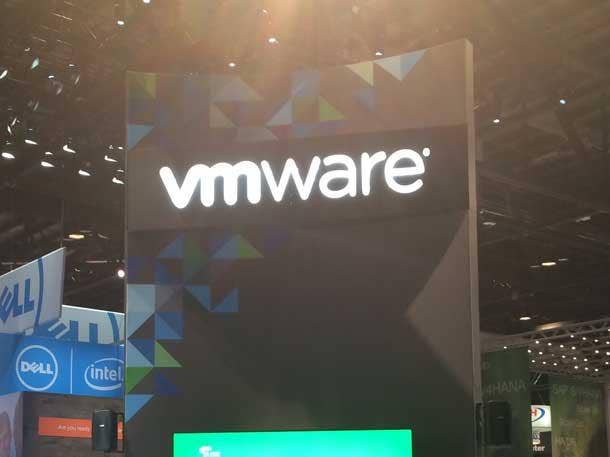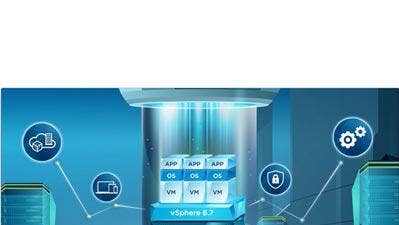VMware’s Bitfusion And Uhana AI Acquisitions: 5 Things To Know
VMware’s acquisition tear continued this month with the acquisitions of startups Bitfusion and Uhana. Here are five things you need to know about VMware’s M&A strategy.

VMware’s Acquisition Spree
VMware is on an acquisition tear in 2019, putting its money where its mouth is in terms of strategic purchases to drive new artificial intelligence capabilities and opportunities inside the company’s broad software portfolio.
This month, the Palo Alto, Calif.-based virtualization superstar announced its intent to acquire Sunnyvale, Calif.-based Bitfusion, who specializes in virtualizing hardware accelerators for applications, as well as Palo Alto, Calif.-based Uhana, which automates network operations and optimizes application experience through AI. Financial terms of both deals were not publicly disclosed.
VMware has already been making waves in 2019 in hot technology spaces such as in containers while also emerging as a hybrid cloud leader with new and tighter integrations with the likes of Dell Technologies, Amazon and Microsoft.
CRN breaks down the five things you need to know about Bitfusion, Uhana and VMware’s integration plans for the two new additions.

Bitfusion’s Special Sauce
Bitfusion is a pioneer in virtualized software for accelerated computing aimed at helping business accelerate complex workloads on GPUs (graphics processor units), FPGAs (field-programmable gate arrays) and ASICs (application-specific integrated circuits). The startup’s architecture speeds up performance by offloading processing to accelerator chips.
Founded in 2015, Bitfusion provides better sharing of GPU resources among isolated GPU compute workloads, allowing sharing to happen across the customer’s network environment. The company offers a software platform that decouples specific physical resources from the servers they are attached to.
“For example, the platform can share GPUs in a virtualized infrastructure, as a pool of network-accessible resources, rather than isolated resources per server,” said Krish Prasad, senior vice president and general manager for VMware’s Cloud Platform Business Unit in a statement. “Bitfusion offers for hardware acceleration what VMware offered to the compute landscape several years ago. Bitfusion also aligns well with VMware’s “Any Cloud, Any App, Any Device” vision with its ability to work across AI frameworks, clouds, networks, and formats such as virtual machines and containers.”

Bitfusion Integrated Into vSphere
VMware will integrate Bitfusion into its flagship data center virtualization platform vSphere. The integration roadmap between Bitfusion and VMware could change the way companies leverage hardware accelerators in their data centers as VMware is hoping to create a standardize virtualized accelerated computing solution both in the cloud and on-premises with Bitfusion technology. Combining vSphere with Bitfusion Flex Direct will “deliver a cloud operational model to an emerging part of the data center as well as bridge the gap between the traditional CPU-only infrastructure and infrastructure featuring hardware acceleration technologies,” said VMware’s Prasad.
Bitfusion vendor- and hardware-agnostic technology will allow customers to virtualize their GPUs and share processing power across multiple virtual server.
VMware CEO Pat Gelsinger said in a recent tweet, “Delighted to welcome @bitfusionio to the family. We will address #AI and #MachineLearning as never before making GPU a proper element of computing fabric.”
Delighted to welcome @bitfusionio to the family. We will address #AI and #MachineLearning as never before making GPU a proper element of computing fabric. https://t.co/w6SBVd1bQb
— Pat Gelsinger (@PGelsinger) July 22, 2019

Uhana
With the shift from 4G to 5G quickly approaching along with more networking demands, VMware acquired Uhana with eyes set on the Communications Service Providers (CSP) space. Founded in 2015, the startup specializes in the use of deep learning and real-time AI in carrier networks and applications to automate network operations and optimize application experience.
Uhana provides an AI engine that discovers anomalies in the network or application, prioritizes them by their estimated impact, predicts their likely root causes and automatically recommends optimization strategies for the best user experience. The startup’s technology helps operators reduce the cost of network operations, improve operational efficiently and offer a differentiated application experience, according to Shekar Ayyar, executive vice president of strategy and corporate development, and general manager of VMware’s Telco Group.
“Uhana’s core technology is a highly-scalable, low-latency, real-time stream processing and AI platform, deployable in the operator’s private cloud or public cloud infrastructure,” said Ayyar in a statement. He said Uhana includes a high-performance stream processing engine that ingests network telemetry from a variety of data sources and processes the telemetry to provide real-time visibility.

VMware’s 5G and Telco Push With Uhana
Uhana solutions will be injected into VMware’s Telco Cloud and Edge Cloud portfolio aimed at providing the telecom industry to help with the transition to 5G. Additionally, Uhana technology will empower intelligence and analytics for VMware Smart Assurance and VMware Smart Experience products.
VMware Smart Assurance is an automated service assurance solution designed to bridge the gap between the virtual and physical worlds. It provides holistic monitoring and network management across all layers for rapid insights and improved customer experience. VMware Smart Experience is a modular big data product that consumes data streams and provide real-time analytics capabilities to generate insights to solve problems.
VMware’s Telco Cloud business is a multi-cloud strategy to enable the unification of a network and IT environment while connecting it to private enterprise clouds, edge clouds and public clouds. VMware’s teclo cloud platform includes technologies such as software-defined WAN (SD-WAN), managed security and digital workspace solutions.
Uhana’s cloud software platform uses neural networking to boost the automation capabilities of CSP networks which can be added to either public or private cloud infrastructure. “Uhana will further support VMware’s ability to support and to serve the telecom industry and deepen intelligence in the journey to 5G,” said Sachin Katti, co-founder of Uhana in a statement.

VMware’s 11-Month M&A Tear
VMware has been on an acquisition binge over the past 11 months, announcing plans to buy a total of seven companies including its August 2018 purchase of CloudHealth Technologies. The Uhana and Bitfusion acquisition announcements came just a week apart from each other this month.
This year, VMware closed the acquisition of software networking innovator Avi Networks in a move to bring the public cloud experience to the data center by creating the “industry’s only complete software-defined networking stack” built for the modern multi-cloud era. For a total price tag of $550 million, VMware acquired Kubernetes star Heptio in late 2018.
With the except of Heptio, the seven acquisitions -- which also includes application deployment specialist Bitnami and AetherPal – have had no financial terms attached to the deals. However, it is sufficient to say that VMware has spent well over $1 billion in acquisitions over the past 11 months as its strategic and operational relationship with Dell Technologies hits its stride.